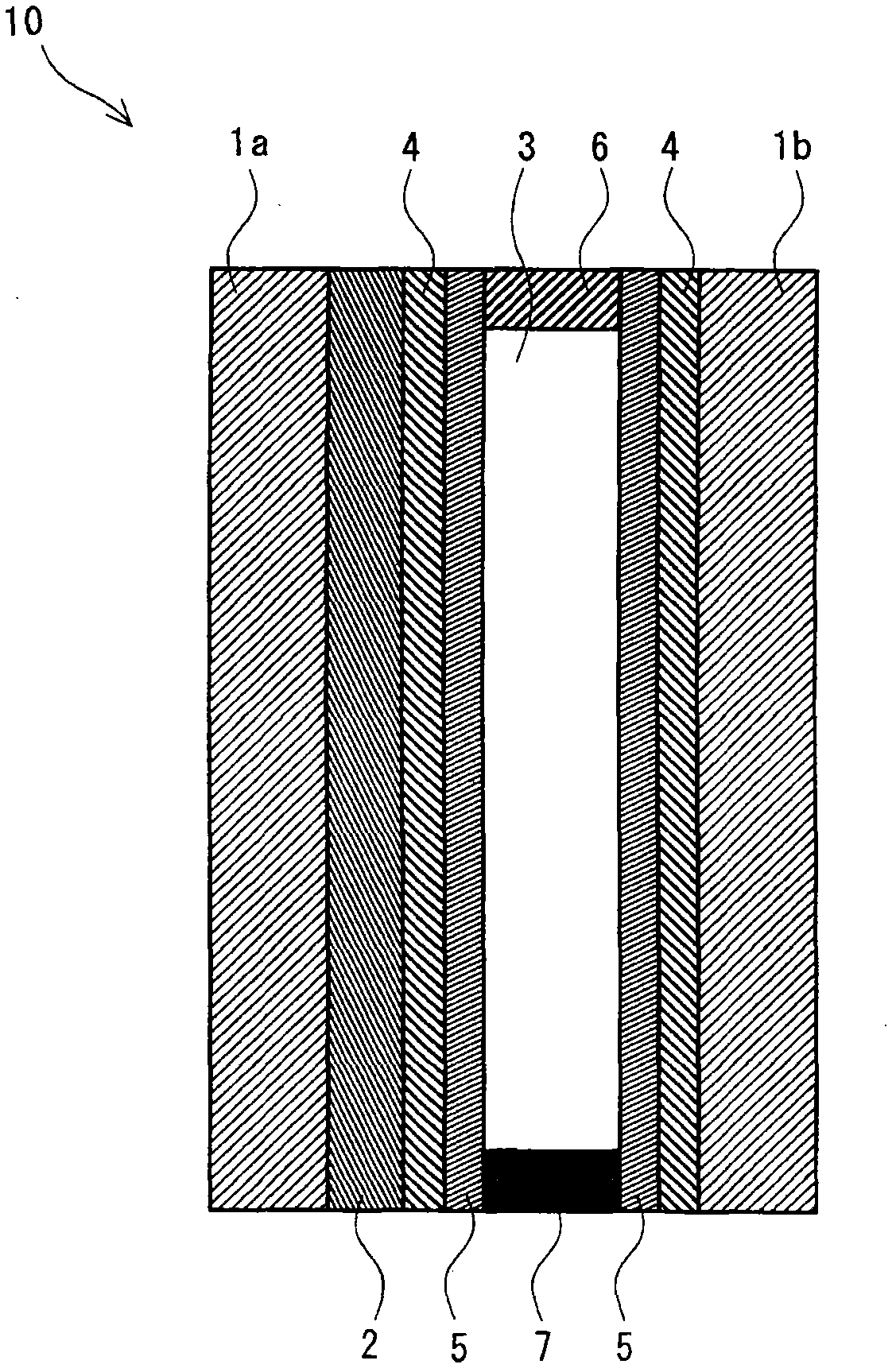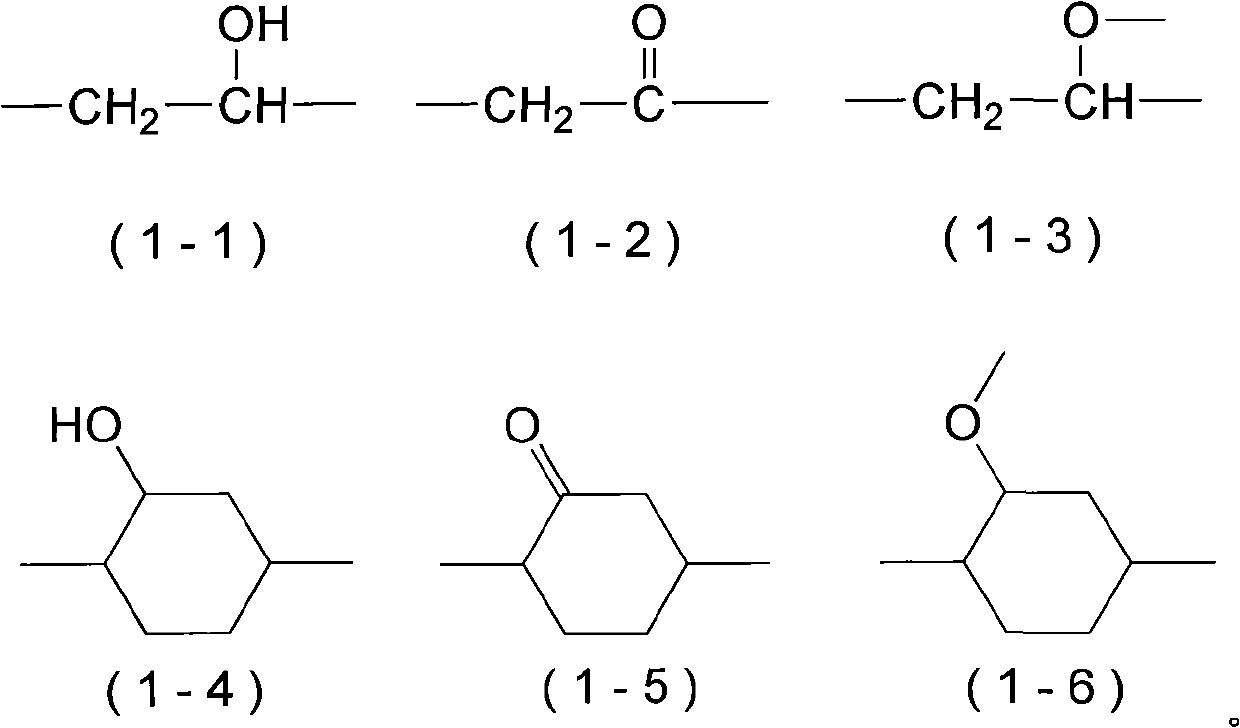Liquid crystal display device, positive radiation-sensitive composition, interlayer insulating film for liquid crystal display device and method for forming the same
A liquid crystal display element, interlayer insulating film technology, applied in nonlinear optics, photosensitive materials for opto-mechanical equipment, optics, etc. drop and other problems, to achieve the effects of excellent storage stability, suppression of deformation, and high voltage retention
- Summary
- Abstract
- Description
- Claims
- Application Information
AI Technical Summary
Problems solved by technology
Method used
Image
Examples
Embodiment
[0330] The present invention will be described in detail below based on examples, but the present invention should not be limitedly interpreted based on the description of the examples.
[0331] Mw and Mn of the polymer were measured by GPC under the following conditions.
[0332] Device: GPC-101 (manufactured by Showa Denko)
[0333] Column: Combination of GPC-KF-801, GPC-KF-802, GPC-KF-803 and GPC-KF-804
[0334] Mobile phase: tetrahydrofuran
[0335] Column temperature: 40°C
[0336] Flow rate: 1.0mL / min
[0337] Sample concentration: 1.0% by mass
[0338] Sample injection volume: 100μL
[0339] Detector: Differential refractometer
[0340] Standard material: monodisperse polystyrene
[0341]
[0342] [Preparation example 1]
[0343] Each liquid crystal compound (25% of the liquid crystal compound represented by the above formula (a), 30% by mass of the liquid crystal compound represented by the formula (b), 30% by mass of the liquid crystal compound represented b...
Synthetic example 1
[0351] Into a flask equipped with a condenser and a stirrer, 7 parts by mass of 2,2'-azobis(2,4-dimethylvaleronitrile) and 200 parts by mass of diethylene glycol ethyl methyl ether were added. Next, add 5 parts by mass of methacrylic acid, 40 parts by mass of 1-ethoxyethyl methacrylate, 5 parts by mass of styrene, 40 parts by mass of glycidyl methacrylate, 10 parts by mass of 2-hydroxyl methacrylate Ethyl ester and 3 parts by mass of α-methylstyrene dimer were replaced with nitrogen, and then slowly stirred. The temperature of the solution was raised to 70° C., and the temperature was maintained for 5 hours to obtain a polymer solution containing the polymer (A-1). Polystyrene conversion weight average molecular weight (Mw) of polymer (A-1) was 9,000. In addition, the solid content concentration of the polymer solution obtained here was 32.1 mass %.
Synthetic example 2
[0353] In a flask equipped with a condenser tube and a stirrer, 7 parts by mass of 2,2'-azobis(2,4-dimethylvaleronitrile) and 200 parts by mass of diethylene glycol ethyl methyl ether were added. Then add 5 parts by mass of methacrylic acid, 40 parts by mass of tetrahydro-2H-pyran-2-yl methacrylate, 5 parts by mass of styrene, 40 parts by mass of glycidyl methacrylate, 10 parts by mass of methacrylic acid 2-Hydroxyethyl ester and 3 parts by mass of α-methylstyrene dimer were switched with nitrogen, and then slowly stirred. The temperature of the solution was raised to 70°C, and the temperature was maintained for 5 hours to obtain a polymer solution containing the polymer (A-2). Polystyrene conversion weight average molecular weight (Mw) of polymer (A-2) was 9,000. In addition, the solid content concentration of the polymer solution obtained here was 31.3 mass %.
PUM
 Login to View More
Login to View More Abstract
Description
Claims
Application Information
 Login to View More
Login to View More - Generate Ideas
- Intellectual Property
- Life Sciences
- Materials
- Tech Scout
- Unparalleled Data Quality
- Higher Quality Content
- 60% Fewer Hallucinations
Browse by: Latest US Patents, China's latest patents, Technical Efficacy Thesaurus, Application Domain, Technology Topic, Popular Technical Reports.
© 2025 PatSnap. All rights reserved.Legal|Privacy policy|Modern Slavery Act Transparency Statement|Sitemap|About US| Contact US: help@patsnap.com



